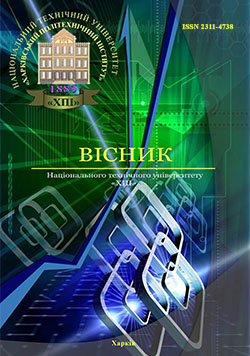SCIENTIFICALLY-METHODICAL BASES OF CONFIGURATION MANAGEMENT OF FIRE SAFETY PROJECTS
DOI:
https://doi.org/10.20998/2413-3000.2016.1174.10Keywords:
management, configuration, project, system, fire safety, project management tasksAbstract
The systems approach to the fire safety management projects is exposed and the basic nine system constituents which characterize their dynamics are marked. The scientifically-methodical principles of research of causation connections between system constituents are grounded. There are suggested the descriptions of fires to divide into descriptions of the burning objects state and description of the burning cells state. There are grounded, that in fire safety projects are executed basic (project-technological) and additional functions which determine their parameters (configuration). It is set that process of fire safety projects management configuration is based on the processes management, maintenance, times and by resources. The basic tasks of the system (integrated) management configuration, by maintenance, times and by resources are marked. The causation between the noted tasks, which determine their decision is exposed. It is found out, that the basic method of tasks decision solution of integrated management is a method of statistical imitation modeling of fire safety projects. The informative providing of such modeling is carried out on the basis of knowledge‘s from fire safety.References
Practice Standard for Project Configuration Management. Project Management Institute. Four Campus Boulevard. Newton Square. (2007). PA 19073-3299 USA, 53.
Brushlinskiy N. N., «et al.». (1986). Sovershenstvovaniye organizatsii i upravleniya pozharnoy okhranoy [Improvement of organization and management of fire protection service]. Moscow: Stroyizdat, 152 [in Russian].
Ratushnyy R. T. (2005). Metody ta modeli upravlinnya konfihuratsiyeyu proektu udoskonalennya systemy pozhezhohasinnya u sil's'komu administratyvnomu rayoni (na prykladi L'vivs'koyi oblasti) [Methods and model of configuration management of project on improving fire suppression systems in rural administrative district (for example, Lviv region)]. Extended abstract of candidate’s thesis. Lviv, 19 [in Ukrainian].
Zaver V. B. (2012). Metody ta modeli identyfikatsiyi konfihuratsiyi proektiv reinzhynirynhu system pozhezhohasinnya hirs'kykh lisovykh masyviv [Methods and model of configuration identification of projects on extinguishing systems re-engineering of mountain forests]. Extended abstract of candidate’s thesis. Lviv, 22 [in Ukrainian].
Brushlinskiy N. N. & Semikov V. A. (1985). Veroyatnostnaya model' protsessa funktsionirovaniya operatsionnykh otdeleniy pozharnoy okhrany [The probabilistic model of the operational fire departments functioning]. Moscow: VNIIPO. 75–79 [in Russian].
Klyus P. P. (1998). Pozhezhna taktyka [Fire Tactics: Textbook]. Kharkiv: Osnova, 592 [in Ukrainian].
Syorchduk O. V., «et al.». (2012). Systemne doslidzhennya protsesu upravlinnya prohramamy ta portfelyamy [Systemic research on process of program and portfolio management]. Naukovyy zhurnal NTU. «Upravlinnya proektamy, systemnyy analiz i lohistyka» – Scientific journal of National Transport University: project management, systems analysis and logistics. Vol. 10. Kiev: NTU, 235-241 [in Ukrainian].
Downloads
Published
Issue
Section
License
Copyright (c) 2016 Олександр Васильович СИДОРЧУК, Роман Тадейович РАТУШНИЙ, Олександр Миколайович ЩЕРБАЧЕНКО, Андрій Романович РАТУШНИЙ

This work is licensed under a Creative Commons Attribution-NonCommercial-ShareAlike 4.0 International License.
Our journal abides by the Creative Commons copyright rights and permissions for open access journals.
Authors who publish with this journal agree to the following terms:
Authors hold the copyright without restrictions and grant the journal right of first publication with the work simultaneously licensed under a Creative Commons Attribution-NonCommercial-ShareAlike 4.0 International License (CC BY-NC-SA 4.0) that allows others to share the work with an acknowledgement of the work's authorship and initial publication in this journal.
Authors are able to enter into separate, additional contractual arrangements for the non-commercial and non-exclusive distribution of the journal's published version of the work (e.g., post it to an institutional repository or publish it in a book), with an acknowledgement of its initial publication in this journal.
Authors are permitted and encouraged to post their published work online (e.g., in institutional repositories or on their website) as it can lead to productive exchanges, as well as earlier and greater citation of published work.

